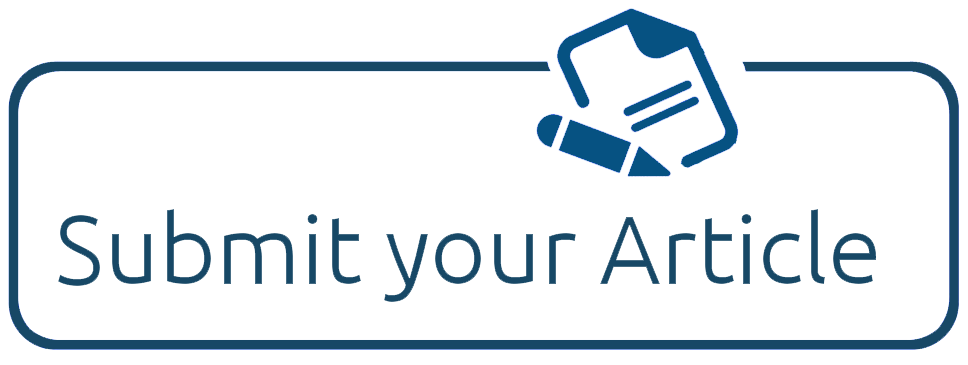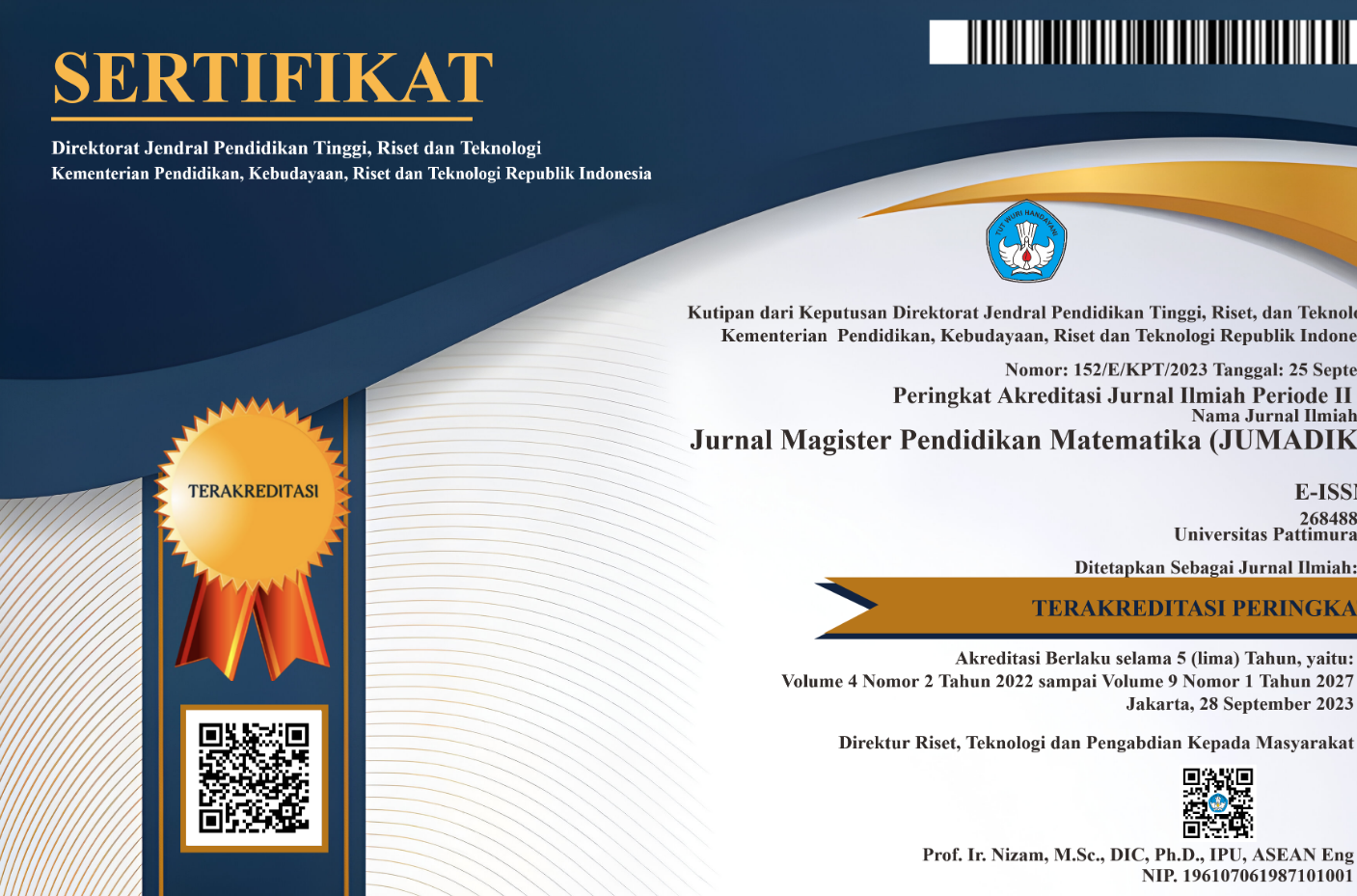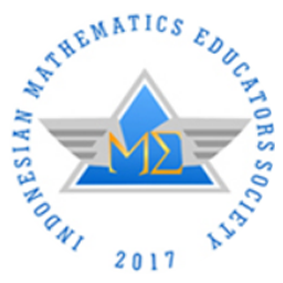LITERASI MATEMATIKA SISWA DALAM MENYELESAIKAN SOAL PROGRAMME FOR INTERNATIONAL STUDENT ASSESSMENT (PISA)
Abstract
contenxts. This study aims to describe the mathematical literacy of class X high school students in solving PISA questions. Date collection wa carried out using tests and interviews. 2 questions level 4dan level 6 are given to students. Date analysis is based on PISA mathematical process indicators namely formulating, applying, and interpreting. The results showed that: in the process of formulating, students mentioned important information in the problem, how to slove it and what concepts would be used, as well as what was know and asked in the problem. In the process of applying students to design and implement strategies according to the information they have made, draw the required objects according to the questions given. In the process of interpreting, students explain the reasons why the conclusions they get are in accordance with the context of the problem given.
Downloads
References
Jupri, A., dkk. 2014. “Difficulties in Initial Algebra Learning in Indonesiaâ€. Mathematics Education Research Journal: pp 1-28
Kemendikbud. 2014. Peraturan Menteri Pendidikan dan Kebudayaan Nomor 59 tentang Kurikulum 2013 Sekolah Menengah Atas/Madrasah Aliyah. Jakarta: Kemendikbud.
Mahdiansyah & Rahmawati. 2014. “Literasi Matematika Siswa Pendidikan Menengah: Analisis Menggunakan Desain Tes Internasional Dengan Konteks Indonesiaâ€. Jurnal Pendidikan Dan Kebudayaan. Vol. 20 (4): hal 452–469.
UNESCO. 1975. International Symposium for Literacy, Paris: International Coordination Secretariat for Literacy
UNESCO. 2005 Education for All: Literacy for Life. Paris: UNESCO
OECD. 2013a. PISA 2012 Results: What Student Know and Can Do. Student Performance in Reading, Mathematics and Science Volume I, III, IV. Paris: OECD Publishing.
OECD. 2013b. PISA 2012 Assessment and Analytical Framework: Mathematics, Reading, Science, Problem Solving and Financial Literacy. Paris: PISA-OECD Publishing.
OECD. 2016. PISA 2015 Assessment and Analytical Framework: Science, Reading, Mathematic and Financial Literacy. Paris: PISA-OECD Publishing.
Ojose, B. 2011. “Mathematics Literacy: Are We Able to Put the Mathematics We Learn into Everyday Use?â€. Journal of Mathematics Education. Vol 4 (1): pp 89-100.
Steen et al. 2007. Developing Mathematical Literacy
Copyright (c) 2019 JUMADIKA: Jurnal Magister Pendidikan Matematika

This work is licensed under a Creative Commons Attribution-NonCommercial-ShareAlike 4.0 International License.
License and Copyright Agreement
In submitting the manuscript to the journal, the authors certify that:
- They are authorized by their co-authors to enter into these arrangements.
- The work described has not been formally published before, except in the form of an abstract or as part of a published lecture, review, thesis, or overlay journal. Please also carefully read Jurnal Magister Pendidikan Matematika (JUMADIKA) Posting Your Article Policy.
- That it is not under consideration for publication elsewhere,
- That its publication has been approved by all the author(s) and by the responsible authorities – tacitly or explicitly – of the institutes where the work has been carried out.
- They secure the right to reproduce any material that has already been published or copyrighted elsewhere.
- They agree to the following license and copyright agreement.
Copyright
Authors who publish with Jurnal Magister Pendidikan Matematika (JUMADIKA) agree to the following terms:
- Authors retain copyright and grant the journal right of first publication with the work simultaneously licensed under a Creative Commons Attribution-NonCommercial-ShareAlike 4.0 International License (http://creativecommons.org/licenses/by-nc-sa/4.0/) that allows others to share the work with an acknowledgment of the work's authorship and initial publication in this journal.
- Authors are able to enter into separate, additional contractual arrangements for the non-exclusive distribution of the journal's published version of the work (e.g., post it to an institutional repository or publish it in a book), with an acknowledgment of its initial publication in this journal.
- Authors are permitted and encouraged to post their work online (e.g., in institutional repositories or on their website) prior to and during the submission process, as it can lead to productive exchanges, as well as earlier and greater citation of published work.








